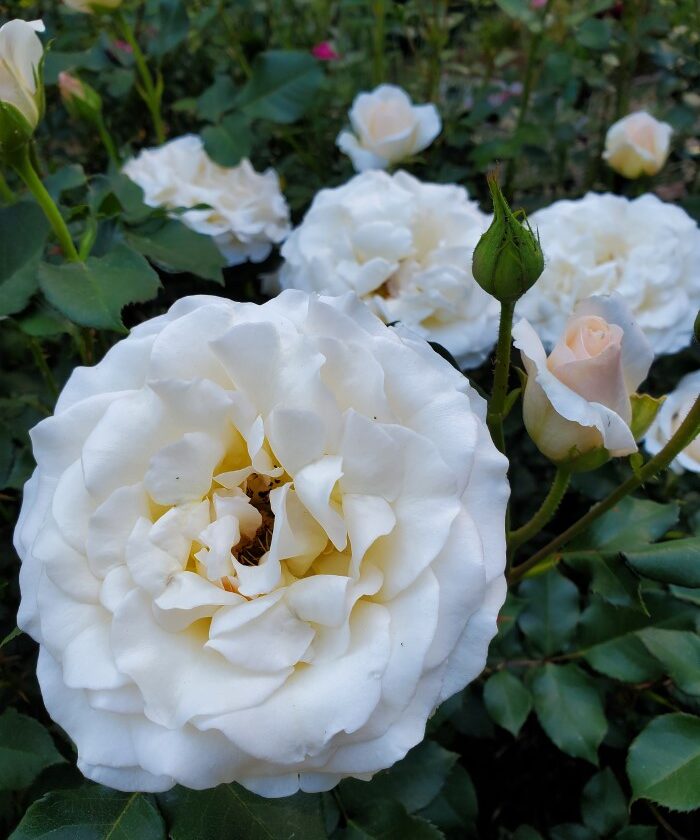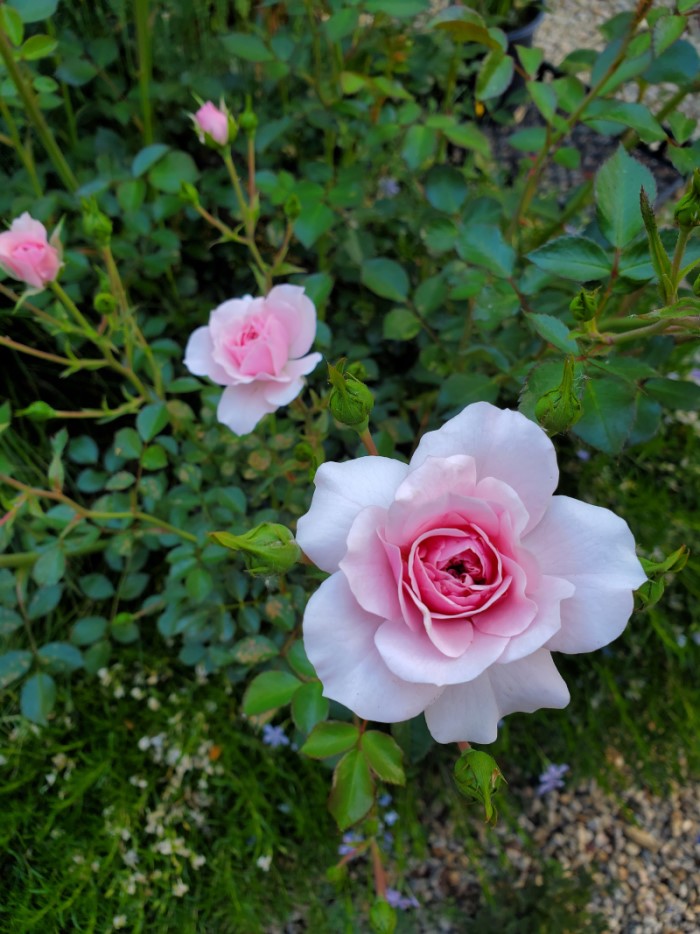Winter Gardening: Bare Root Roses
By Josh Reilly
What are “bare root” plants? These are plants raised to maturity in soil for the retail nursery trade. Harvested during the Winter dormant season, the roots are cleaned of all soil, packed in wood shavings, paper or other absorbent material, and shipped in paper or plastic. They are displayed thus packaged at the nursery or in beds of sand. Bare root plants don’t look like much, so nurseries usually include photos and descriptive blurbs where they are displayed. Several plants are available in bare root form in Winter, including roses, certain fruit trees and berry plants, Japanese anemones, and some types of phlox. We’ll focus on roses here.
Most nursery folk will tell you to plant bare root if you can. Bare root plants are already mature. They have already survived the hazards of “youth,” disease, accident, or pest damage, for example. The fully developed roots are less likely to experience trauma when transplanting, than the young roots in a potted plant (or plug). Planted in dormancy, in Winter, bare root plants will develop and produce (young) mature foliage and flowers in the first year in the ground.
Planting bare root roses is easy, but if it was in sand at the nursery, plant it the same day you bought it. If it’s in wood shavings or paper and you can’t plant it the same day, keep it moist, in shade and protected from frost. Better just to get the thing in the ground. And don’t put a $30 bare root rose in a “$5 dollar hole.” Leave room for the roots to spread. A hole 2 feet wide at the top and 18 inches deep is recommended. Consider gopher protection in the SLV. They own the place. We just live here. A large gopher basket will probably work, but I put my 3 bare root roses in a raised bed, 4 ft by 8 ft and 12 inches deep. So far, so good. Deer protection is also absolutely required. Amazing how deer can simply tear through the thorniest roses and gnash them down, as if they were soft, fresh lettuce. Mine are in the backyard, behind a 6 ft fence. Caveat emptor.
When planting, spread the roots to fill the bottom of the hole. Adding soil amendments is controversial. Plants should start to adjust immediately to the native soil, otherwise roots may not spread properly. Trees and shrubs with poorly developed roots tend to topple in high winds. Still, I normally mix a shovelful of my homemade compost in with a digging fork, for good measure. Finish planting by piling the soil back up to, but not over, the crown of the plant, where the above ground plant begins. This is crucial. Think of the crown as the neck and avoid strangling. Firm the soil down and water in. I use a dilute Vitamin B “rooting solution” (available through Mountain Feed and Farm Supply and Scotts Valley Scarborough Garden Center). Finally, if you apply mulch around the plant, don’t pile it up right under the plant. Mulch will control weeds but will also hold water. Water around the plant’s crown will promote plant disease.

Tale a little time to select the bare root rose(s) you want. Remember that you will have to prune your roses for shape and flowering. Some are “ramblers” and want to climb. Others are very thorny, and still others (old Garden Roses and some shrub roses) will only flower once per year in Spring. Hybrid teas, Floribundas, and Grandifloras will almost always flower twice a year (for our lucky, flatlander neighbors in the “banana belt” areas of Santa Cruz, some of these roses pretty much flower all year long). All these roses have their place, but is it your garden?
Regarding spraying roses: I use OMRI certified dormant oil and copper sulphate, once a year in early January, after pruning (why spray what you are going to remove?).
Josh Reilly, aka Uncle Skip, writes about seasonal gardening from his home in beautiful Ben Lomond, California.
Featured photo of a Pink Grandiflora Rose by Josh Reilly
The San Lorenzo Valley Post is your essential guide to life in the Santa Cruz Mountains. We're dedicated to delivering the latest news, events, and stories that matter to our community. From local government to schools, from environmental issues to the arts, we're committed to providing comprehensive and unbiased coverage. We believe in the power of community journalism and strive to be a platform for diverse voices.





